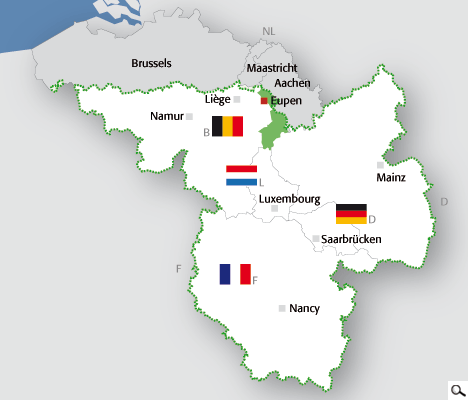The Greater Region of Saarland - Lorraine – Luxembourg - Rhineland-Palatinate – Walloon Region – French and German-speaking community of Belgium
The Greater Region is located between the Rhine, Moselle, Saar and Meuse rivers and encompasses an area of 65,401 km2 with 11.2 million inhabitants.It is located in the center of the European railway network, which is important for Europe's continued merging, and has a structural network, which is partially urban, partially industrial and rural, and forms the foundation of continued, valuable, economic and cultural relations.
 |

This fusion covers all significant topics of economic, cultural, touristic, and social development. The culture of this major region is characterized by Roman as well as Germanic influences. National borders truly lose some of their effect. This becomes clear once you take a look at the number of consumers and commuters traveling between the Saarland and France, between Belgium and Luxembourg, or between Luxemburg and Rheinland-Pfalz, every day. The total number of commuters is approximately 120,000, of which 90,000 commute to Luxemburg.
East Belgium is integrated into the work force of this major region through political representatives, as well as representatives of social and economic partners.
Source: Industrie und Handelskammer Eupen-Malmedy-St.Vith
> More information: www.grossregion.net

